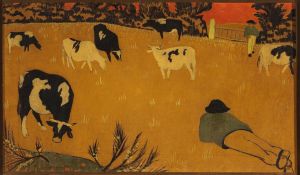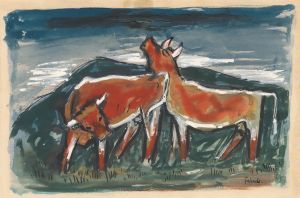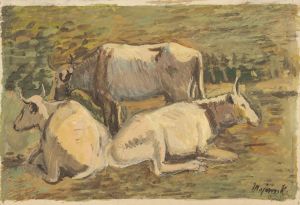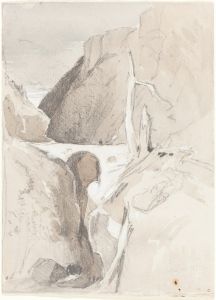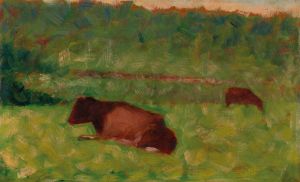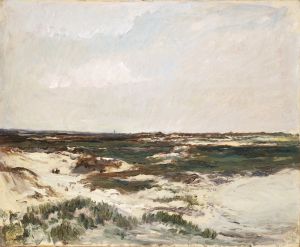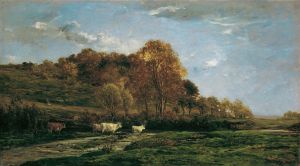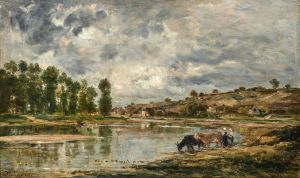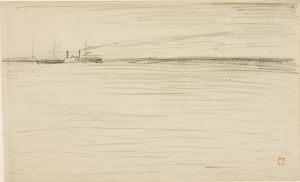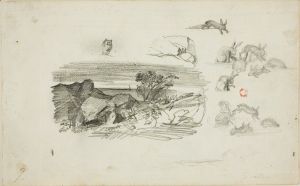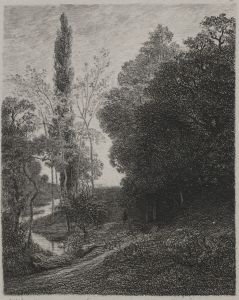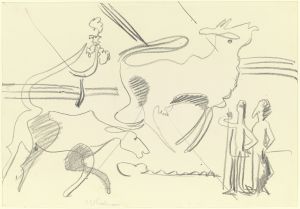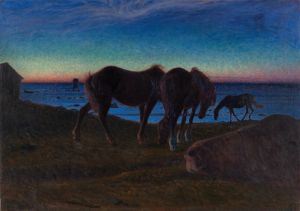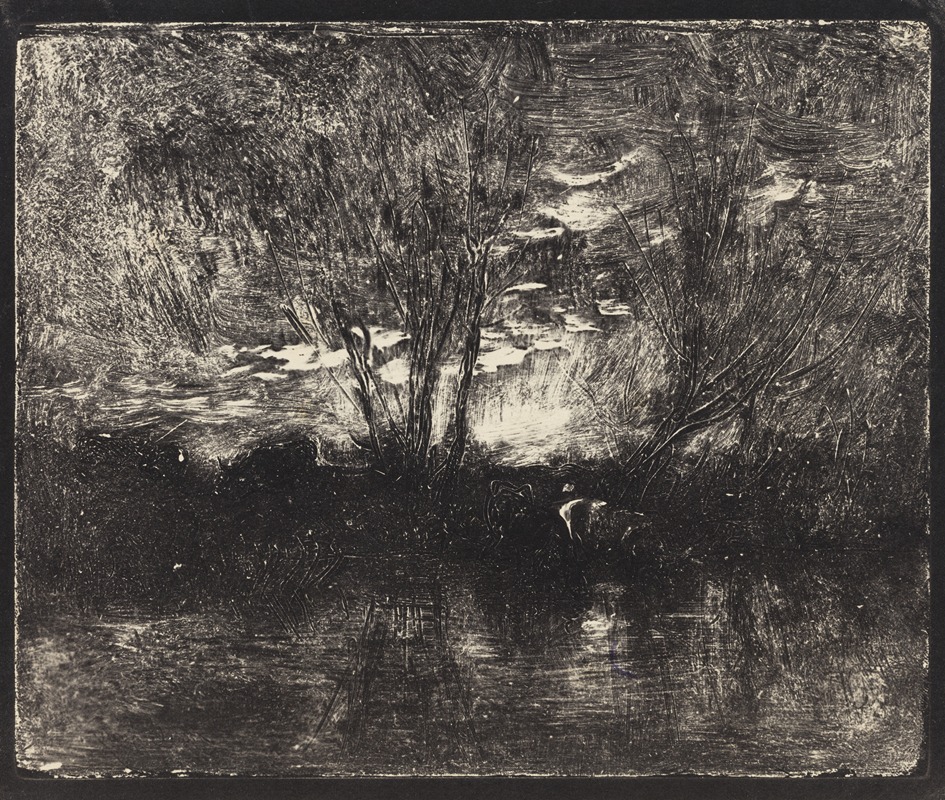
Cows at a Watering-Place
A hand-painted replica of Charles François Daubigny’s masterpiece Cows at a Watering-Place, meticulously crafted by professional artists to capture the true essence of the original. Each piece is created with museum-quality canvas and rare mineral pigments, carefully painted by experienced artists with delicate brushstrokes and rich, layered colors to perfectly recreate the texture of the original artwork. Unlike machine-printed reproductions, this hand-painted version brings the painting to life, infused with the artist’s emotions and skill in every stroke. Whether for personal collection or home decoration, it instantly elevates the artistic atmosphere of any space.
Charles François Daubigny, a prominent French landscape painter of the 19th century, created Cows at a Watering-Place as part of his extensive body of work that focused on naturalistic depictions of rural life and the countryside. Daubigny was a key figure in the Barbizon School, a group of artists who sought to move away from the formalism of academic painting and instead embraced the beauty of nature as their primary subject. His works often served as a precursor to Impressionism, influencing later artists such as Claude Monet.
Cows at a Watering-Place exemplifies Daubigny’s characteristic style, which combines a keen observation of nature with a loose, painterly technique. The painting depicts a tranquil rural scene where cows gather near a body of water, surrounded by lush vegetation and an expansive sky. The composition reflects Daubigny’s interest in capturing the harmony between animals and their natural environment. His use of light and shadow, as well as his attention to atmospheric effects, demonstrates his mastery in portraying the subtleties of the landscape.
Daubigny frequently painted en plein air (outdoors), a practice that allowed him to study the changing effects of light and weather directly from nature. This approach is evident in Cows at a Watering-Place, where the naturalistic rendering of the scene suggests that it was inspired by direct observation. The painting’s serene mood and pastoral subject matter align with the Barbizon School’s emphasis on the simplicity and beauty of rural life.
The exact date of creation for Cows at a Watering-Place is not definitively documented, but it is consistent with Daubigny’s mature period, during which he produced many works featuring rivers, meadows, and livestock. Daubigny often worked in the French countryside, particularly along the banks of the Seine and Oise rivers, which provided him with abundant inspiration for his landscapes.
Today, Cows at a Watering-Place is recognized as a fine example of Daubigny’s contribution to 19th-century landscape painting. His ability to capture the essence of rural France with sensitivity and skill has earned him a lasting place in art history. The painting is housed in a public or private collection, though specific details about its current location are not readily available.





